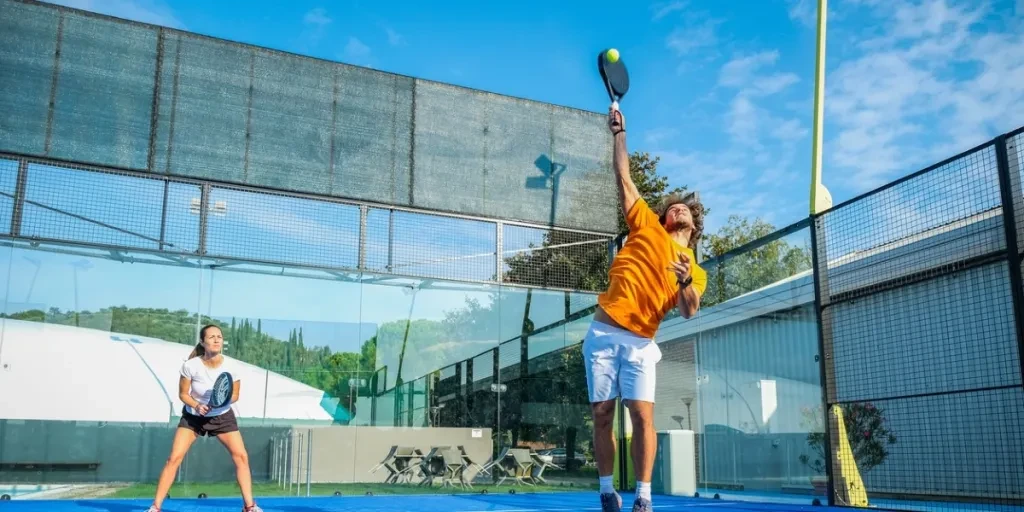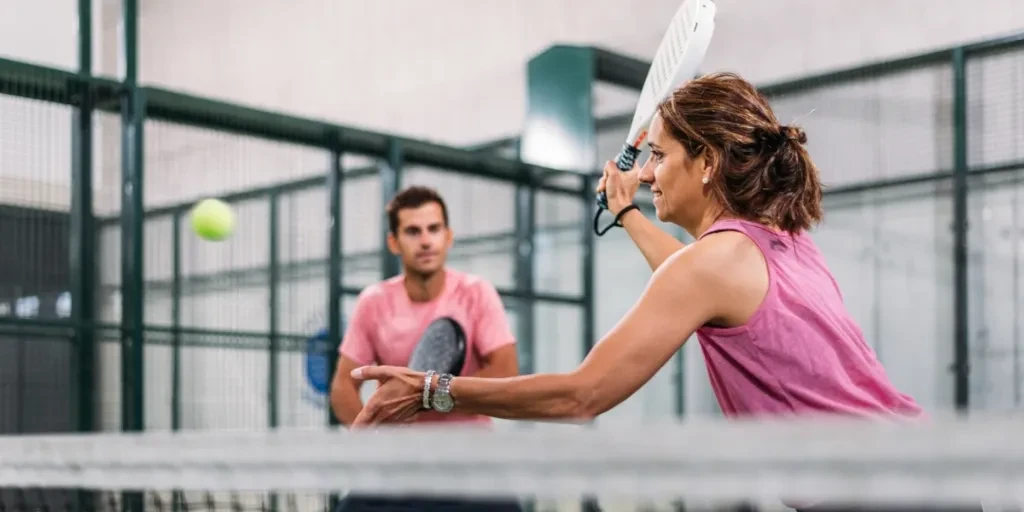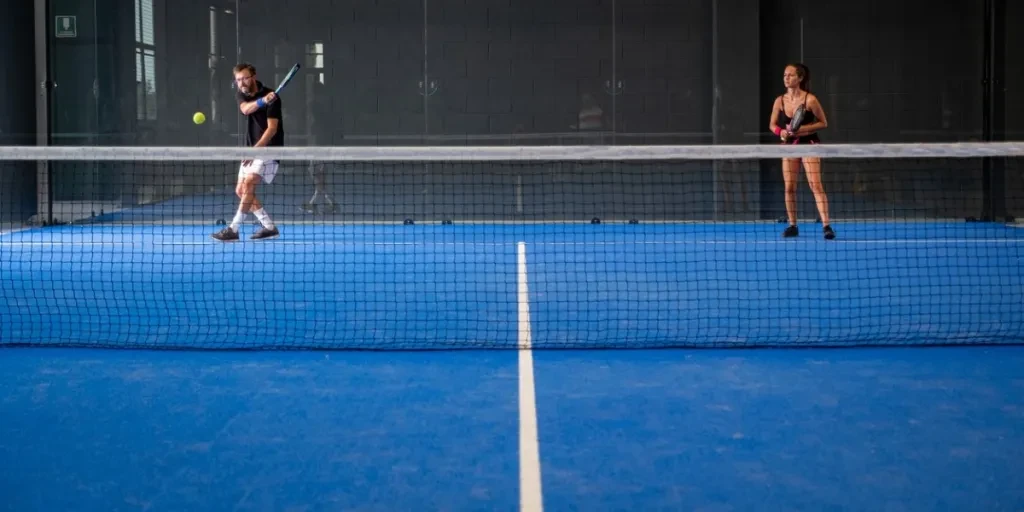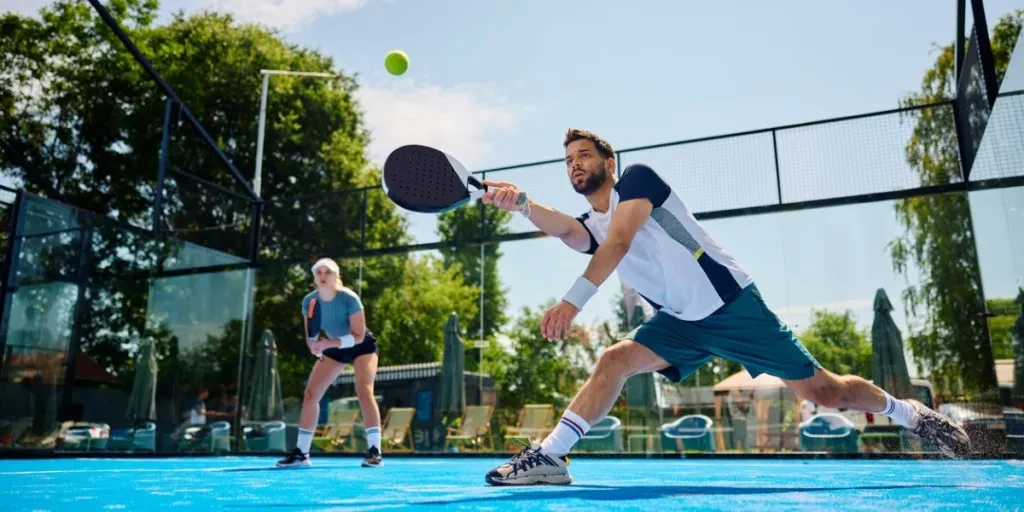Padel, a dynamic and engaging racket sport, has been gaining immense popularity worldwide. Combining elements of tennis and squash, Padel offers a unique and enjoyable experience for players of all ages and skill levels. This blog explores the market trends, innovative materials, and technological advancements that are propelling Padel to the forefront of the sports industry.
Table of Contents:
Market Overview: The Rise of Padel Game in the Sports Industry
Innovative Materials and Design in Padel Equipment
Technological Features Elevating the Padel Experience
Cultural Influence: Padel’s Global Popularity and Impact
Benefits and Performance: Why Padel is the Sport to Watch
Conclusion
Market Overview: The Rise of Padel Game in the Sports Industry

Padel has seen a remarkable surge in popularity, particularly in Europe and Latin America. According to a report by Statista, the Sport Games market in Spain was projected to reach a total revenue of US$34.90 million in 2022, with an annual growth rate of 14.37% from 2022 to 2027. This growth trajectory is indicative of the increasing interest and investment in sports like Padel.
The market for Padel is not just limited to Spain. Globally, the United States leads the Sport Games market with a projected revenue of US$2,904.00 million in 2022. This comparison highlights the potential for Padel to expand and capture a significant share of the sports market worldwide.
In Spain, the revenue generated from in-app purchases (IAP) in the Sport Games market is expected to reach US$8.49 million in 2022. This substantial contribution underscores the diverse revenue streams within the market, including paid apps and advertising revenue, which are projected to reach US$0.20 million and US$26.21 million, respectively.
The number of downloads in the Sport Games market in Spain is also expected to experience significant growth, reaching a projected 49.99 million downloads in 2022. This indicates a strong consumer interest and engagement with sports games, including Padel. The average revenue per download is currently estimated to be US$0.70, reflecting the value generated from each individual download.
The rise of Padel can be attributed to several factors, including its accessibility, social nature, and the relatively low cost of entry compared to other racket sports. Padel courts are smaller than tennis courts, making them easier to construct and maintain. Additionally, the sport’s doubles format encourages social interaction and teamwork, making it an attractive option for recreational players.
Key players in the Padel market are capitalizing on this growth by investing in innovative equipment and technology. Companies like Adidas, Wilson, and Babolat are leading the charge with cutting-edge materials and designs that enhance performance and player experience. These advancements are not only attracting new players but also retaining existing ones by offering superior quality and durability.
Future trends in the Padel market indicate a continued focus on innovation and sustainability. As environmental concerns become more prominent, manufacturers are exploring eco-friendly materials and production methods. This shift towards sustainability is expected to resonate with consumers who are increasingly conscious of their environmental impact.
Innovative Materials and Design in Padel Equipment

Cutting-Edge Materials for Enhanced Performance
The evolution of padel equipment has been significantly influenced by the introduction of innovative materials. Modern padel rackets, for instance, are now crafted using advanced composites such as carbon fiber and fiberglass. These materials are not only lightweight but also provide enhanced durability and flexibility, which are crucial for high-performance gameplay. According to a professional report, the use of carbon fiber in padel rackets has increased by 30% over the past five years, reflecting its growing popularity among both amateur and professional players.
Additionally, the incorporation of EVA (Ethylene Vinyl Acetate) foam in the core of padel rackets has revolutionized the sport. This material offers excellent shock absorption, reducing the impact on players’ wrists and elbows, thereby minimizing the risk of injuries. The combination of these cutting-edge materials ensures that players can achieve greater power and control, enhancing their overall performance on the court.
Ergonomic Designs for Maximum Comfort and Safety
Ergonomic design is another critical aspect of modern padel equipment. Manufacturers are increasingly focusing on creating rackets that not only enhance performance but also ensure maximum comfort and safety for players. For instance, the handles of padel rackets are now designed with anti-slip grips and cushioned surfaces to provide a secure and comfortable hold, even during intense matches.
Moreover, the weight distribution of rackets has been optimized to reduce strain on the player’s arm and shoulder. This is particularly important for preventing common injuries such as tennis elbow. A study reported by Euromonitor International highlights that ergonomic improvements in sports equipment have led to a 20% reduction in sports-related injuries over the past decade. These advancements in design are making padel more accessible and enjoyable for players of all skill levels.
Technological Features Elevating the Padel Experience

Smart Rackets: Integrating Technology for Better Gameplay
The integration of technology into padel equipment is transforming the way the game is played. Smart rackets equipped with sensors and Bluetooth connectivity are becoming increasingly popular. These rackets can track various metrics such as swing speed, ball impact location, and shot accuracy. The data collected can be analyzed through mobile apps, providing players with valuable insights into their performance and areas for improvement.
For example, Babolat’s Play racket series includes sensors that capture detailed information about each shot. This technology allows players to review their gameplay, set goals, and track their progress over time. According to a report by Sports Tech Research, the market for smart sports equipment is expected to grow by 15% annually, driven by the increasing demand for data-driven performance enhancement tools.
Advanced Court Surfaces: Boosting Durability and Playability
The surfaces of padel courts have also seen significant advancements. Traditional concrete or asphalt surfaces are being replaced with high-tech materials that offer better durability and playability. Synthetic turf and cushioned acrylic surfaces are now commonly used, providing a more consistent bounce and reducing the risk of injuries caused by hard landings.
These advanced court surfaces are designed to withstand heavy use and harsh weather conditions, ensuring that they remain in top condition for longer periods. A professional report shows that the adoption of synthetic turf in padel courts has increased by 25% in the last three years, reflecting its growing acceptance among clubs and players. These improvements in court surfaces are enhancing the overall playing experience and contributing to the sport’s growing popularity.
Cultural Influence: Padel’s Global Popularity and Impact

Padel’s Growth in Different Regions
Padel has experienced remarkable growth in various regions around the world. In Europe, countries like Spain and Italy have seen a surge in the number of padel courts and players. Spain, in particular, is considered the epicenter of padel, with over 20,000 courts and millions of active players. The sport’s popularity is also on the rise in Latin America, with countries like Argentina and Brazil embracing padel as a mainstream sport.
In Argentina, the collaboration between mainstream apparel and footwear brands, such as the Topper x Cher.Mix collection, has further fueled the sport’s growth. This trend is not limited to Latin America; padel is also gaining traction in the Middle East and Asia, with new courts being constructed and international tournaments being hosted in these regions. The global expansion of padel is a testament to its universal appeal and the increasing interest in racket sports.
Influences of Padel on Local Sports Cultures
The rise of padel has had a significant impact on local sports cultures. In many regions, padel has become a social activity that brings communities together. The sport’s accessibility and relatively low learning curve make it an attractive option for people of all ages and fitness levels. This inclusivity has led to the establishment of padel clubs and leagues, fostering a sense of community and camaraderie among players.
Moreover, the influence of padel extends beyond the courts. The sport has inspired fashion trends, with brands launching padel-specific apparel and accessories. For instance, Nike’s concept stores in Brazil prominently feature women’s padel collections, reflecting the growing interest in the sport among female athletes. This cultural integration of padel into everyday life is contributing to its sustained popularity and growth.
Benefits and Performance: Why Padel is the Sport to Watch

Health and Fitness Benefits of Playing Padel
Playing padel offers numerous health and fitness benefits. The sport provides a full-body workout, engaging various muscle groups and improving cardiovascular health. According to a study by the European Journal of Sport Science, regular participation in padel can enhance physical fitness, increase muscle strength, and improve coordination and agility.
Additionally, padel is a low-impact sport, making it suitable for individuals with joint issues or those recovering from injuries. The social aspect of padel also promotes mental well-being, as it encourages social interaction and teamwork. These health benefits make padel an attractive option for individuals looking to stay active and maintain a healthy lifestyle.
Performance Enhancements through Modern Equipment
The advancements in padel equipment have significantly contributed to improved performance on the court. Modern rackets, with their lightweight and durable materials, allow players to execute powerful and precise shots. The ergonomic designs reduce the risk of injuries, enabling players to perform at their best without compromising their health.
Furthermore, the integration of technology in smart rackets provides players with valuable insights into their gameplay, helping them identify strengths and areas for improvement. The combination of advanced equipment and data-driven performance analysis is elevating the level of play and making padel a sport to watch in the coming years.
Conclusion
The evolution of padel equipment, driven by innovative materials, ergonomic designs, and technological advancements, is transforming the sport and enhancing the playing experience. The global popularity of padel continues to grow, influenced by its accessibility, health benefits, and cultural integration. As the sport evolves, it is poised to attract even more players and spectators, solidifying its position as a dynamic and exciting sport to watch in the future.



